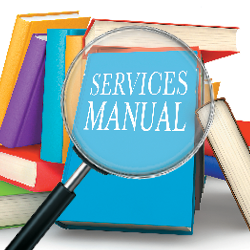|
REGISTRATION REQUIRED
exhibiting 101
 Common Labor Violations
Avoid these seemingly minor labor missteps that can lead to massive show-floor snafus. By Betsy Earle
Without a doubt, the myriad regulations involving labor at trade shows are intricate and tricky to navigate. However, it is essential for exhibit managers to have a basic understanding of what these rules encompass so they know what they can – and, more importantly, cannot – do when it comes to the setup and dismantling of their stands.
It's important to note that there are several types of labor within each show city and convention center, so we'll begin with a few definitions. First, there are exclusive vendors and preferred vendors. What you need to know here is that exclusive vendors are those that you have to work with if you need their service, meaning you can't bring in your own supplier. Exclusive vendors most often include riggers, electricians, and plumbers. Preferred vendors offer some flexibility and typically include installation-and-dismantle labor and audiovisual, flooring, and furnishing providers. Depending on the locale, these vendors may still require you to work with union labor. For example, I&D partners who are not exclusive to the venue may comprise union workers and need to follow the same rules and regulations as the in-house I&D provider, e.g., Freeman, GES, or Fern. No doubt the words "union workers" jumped out at you, and for good reason. Essentially, union labor is an organized group that works together on collective bargaining over wages, benefits, and working conditions for its membership. Unions can be organized at federal, state, and city levels, and they also represent their members in disputes over violations of contract provisions. In regard to trade shows, certain unions may have jurisdiction over an entire labor "sector," such as electricity or material handling. This is why labor in some venues comes with higher rates and minimum work timespans (e.g., not being able to hire an electrician for fewer than two hours) – those provisions are often negotiated by the union. It's also why exhibitors are expressly prohibited from doing certain work themselves. As the saying goes, "It's a union thing." The good news is that information about labor rules is generally getting more accessible, as many of the larger GSCs provide downloadable files that break down what you can and cannot do during I&D. For instance, Freeman's website often has a link called "Exhibitor Education" where you'll see documents breaking down FAQs, shipping vs. material handling, and labor rules. Convention centers themselves also sometimes supply similar documents outlining the local regulations. Unfortunately, all this information is rarely located in one place, so you'll want to check with both the GSC and the venue itself to make sure you're familiar with all the rules for a particular site. Violating labor rules can get you kicked off the show floor, fined, or prevented from exhibiting at a particular trade show or venue in the future. In unionized non-Right to Work states, you can even be escorted out of the building, something I've seen happen in both Chicago and New York. If you are caught breaking labor rules, the best-case scenario is often being charged for one to four hours of labor to pay those who should have been the authorized workers in your booth, a fee that will likely be on top of what you owe to whomever you've already hired to render that service. Occasionally, show management might even tell you that you can no longer exhibit at that show due to breach of contract. Now, you've probably picked up on the fact I've been using a lot of qualifiers (e.g., "often," "sometimes," "usually," etc.) when talking about labor. That's because this is a complicated and fluid subject. What may be the law of the land at a particular show at a particular venue can change in a matter of weeks. That said, having worked with clients in almost all of the major convention centers across the United States, here are some of show labor violations I see on a regular basis.  All the examples I've shared here are just that – examples. The rules and laws across the country are constantly changing and evolving. The most important piece of advice I can give is simple: If you don't know, ask.
All the examples I've shared here are just that – examples. The rules and laws across the country are constantly changing and evolving. The most important piece of advice I can give is simple: If you don't know, ask.
➤ Forgetting to submit your Exhibitor Appointed Contractor form. This form is found in the online exhibitor services kit and is either provided by the GSC or by a third-party organization that manages and oversees these documents. An Exhibitor Appointed Contractor (EAC) form is an authorization stating that you as an exhibitor have chosen a vendor you'd like to bring in to handle some component of your exhibit program. This might be I&D labor or supervision, a flooring installer, or audiovisual provider. There is always a deadline on this form. Depending on the show, if you submit the form after the specified deadline, the GSC could tell you that you can't bring in your own EAC. And if you simply don't submit a document and show up on site with your EAC in tow, you could be forced to use the GSC or, worse, be charged for both your labor crew and the GSC crew. ➤ Assembling your own hanging sign. Say a venue allows exhibitors with certain footprints to build their own booths. So the crew gets to work setting up the back walls, product displays, reception counter, and a tension-fabric header so it's ready for the rigging team to "fly." One problem: There's a provision in the exhibitor kit that all rigged elements must be assembled by show labor. Again, this varies based on the city and sometimes even within the same venue, i.e., there are different rules for the convention center's exhibit hall and ballrooms. In Orlando, the rigging crew will not put together the hanging sign, so either the exhibitor or an I&D crew must do it. In most cities, exhibitors may not do this. Ultimately, you'll need to dig into the exhibitor kit and see who is responsible for what.  There's no way to keep up on all of the rules in all of the cities all of the time, so it behooves you to stay in close contact with your exhibit house or labor partner and explicitly ask if they are up-to-date on what's what.
There's no way to keep up on all of the rules in all of the cities all of the time, so it behooves you to stay in close contact with your exhibit house or labor partner and explicitly ask if they are up-to-date on what's what.
➤ Hooking up your own electrical devices. As a general rule, you can't ever hardwire your own equipment, and in many cases, you also shouldn't plug it in. The state of New York and the Jacob K. Javits Convention Center tend to be among the strictest in this regard, along with McCormick Place in Chicago. To save yourself from substantial hardwiring costs, instead pack plug converters for your equipment and contact the electrical labor team in advance to ask them about their availability for connections. This labor can typically be found under "Booth Work" in the exhibitor kit. ➤ Bringing your booth "through the front door." I once had a client who, unbeknownst to me, snuck an entire hardwood exhibit through the front door of the LVCC. The show went fine until this client needed a forklift to remove the property from the venue. Needless to say, the forklift drivers were not too happy with this gentleman, who they reasoned was skirting material handling fees. While material handling (aka drayage) is not a labor fee billed by the hour, the teamsters who move freight are usually unionized. Part of their jurisdiction is to have control of what's moving in and out of the building, and in this case, my client had been caught. There is lots of information out there about what you can and cannot move into the show on your own, and each venue has rules and limitations that differ as to whether you can use a hand truck, wagon, suitcase, or privately owned vehicle (POV) to bring in your goods. ➤ Hiring the wrong labor team for the wrong part of your install. There are often multiple union jurisdictions in the same building, and the rules can get fuzzy, especially when it comes to riggers, decorators, stagehands, carpenters, and AV. Currently, for example, electricians must put together lightbox back walls at Javits. However, in Las Vegas, carpenters can assemble the lightbox, but it must technically be plugged in by an electrician. Some cities have stagehands, while other locales refer to a similar job description as part of their rigging crew or as decorators. ➤ Failing to submit a Certificate of Insurance. A Certificate of Insurance (COI) is essentially a summary of your business's coverage, and it functions as proof of insurance in the event of a mishap. Submitting a COI might be a condition required of the venue that you're working in, as well as the show at which you're exhibiting. A COI needs to be submitted by all parties (e.g., an exhibitor and all of its EACs) that will be working in the building. This is usually a pretty easy document to obtain. Just reach out to your insurance company and provide it with the dates of the event and the name and address of the group asking for coverage verification. You'll then receive a COI you can forward to the show organizer, but keep a copy with you in case anyone asks for it on site. ➤ Not understanding how rate structures work. While not knowing this might not violate any sort of labor rules, you certainly don't want to be surprised by your invoice at the close of show. In general, union labor is billed on straight time, overtime, and double time – and sometimes even holiday pay. For example, in New York City, the day after Thanksgiving is considered a holiday and is billed uniquely. Additionally, labor hour minimums vary based on the city, as well as the type of labor and with whom the contract is set up. I&D is often billed on a four-hour minimum, electrical on a one-hour minimum, rigging on a two-hour minimum, and plumbers are billed by the half hour. All the examples I've shared here are just that – examples. The rules and laws across the country are constantly changing and evolving. The most important piece of advice I can give is this: If you don't know, ask. This will demonstrate to the GSC that you are trying to do the right thing and not cut corners. Additionally, if there ends up being an issue on site and you have a paper trail indicating that you have tried to go through the proper channels, the show teams will likely be more forgiving. At the end of the day, following the rules and regulations will make for a smoother, more efficient, and less stressful exhibition experience. E  Betsy Earle, CTSM
Betsy Earle, CTSMmanaging director and founder of Event Driven Solutions LLC. Earle obtained her MBA at the University of Miami and earned her Diamond-level CTSM designation in 2018. Exhibiting101@exhibitorgroup.com
|
|
|
||||||||||||||||||||||||||||
|
|
||||||||||||||||||||||||||||
|
TOPICS Measurement & Budgeting Planning & Execution Marketing & Promotion Events & Venues Personal & Career Exhibits & Experiences International Exhibiting Resources for Rookies Research & Resources |
MAGAZINE Subscribe Today! Renew Subscription Update Address Digital Downloads Newsletters Advertise |
FIND IT Exhibit Producers Products & Services All Companies Get Listed |
EXHIBITORLIVE Sessions Exhibit Hall Exhibit at the Show Registration |
ETRAK Sessions Certification F.A.Q. Registration |
CERTIFICATION The Program Steps to Certification Faculty and Staff Enroll in CTSM Submit Quiz Answers My CTSM |
AWARDS Exhibit Design Awards Portable/Modular Awards Corporate Event Awards Centers of Excellence |
NEWS Associations/Press Awards Company News International New Products People Shows & Events Venues & Destinations EXHIBITOR News |
|||||||||||||||||||||
|
||||||||||||||||||||||||||||






